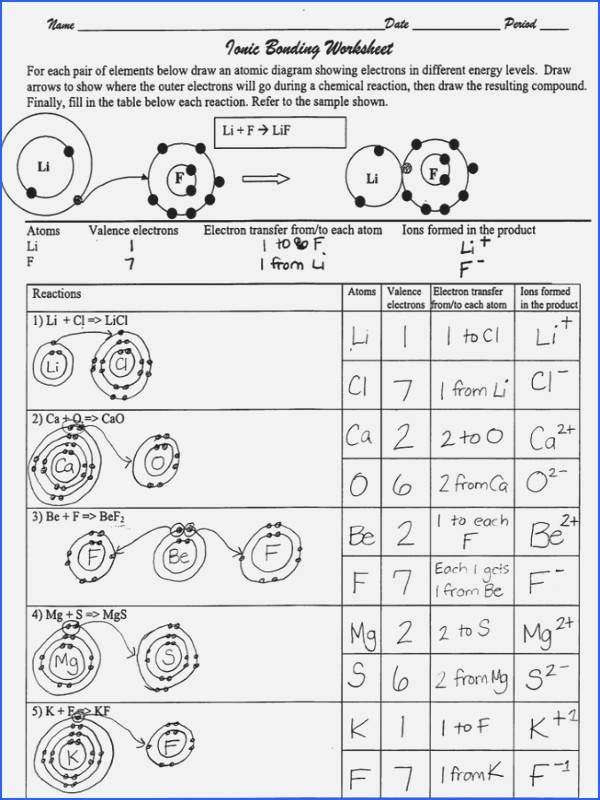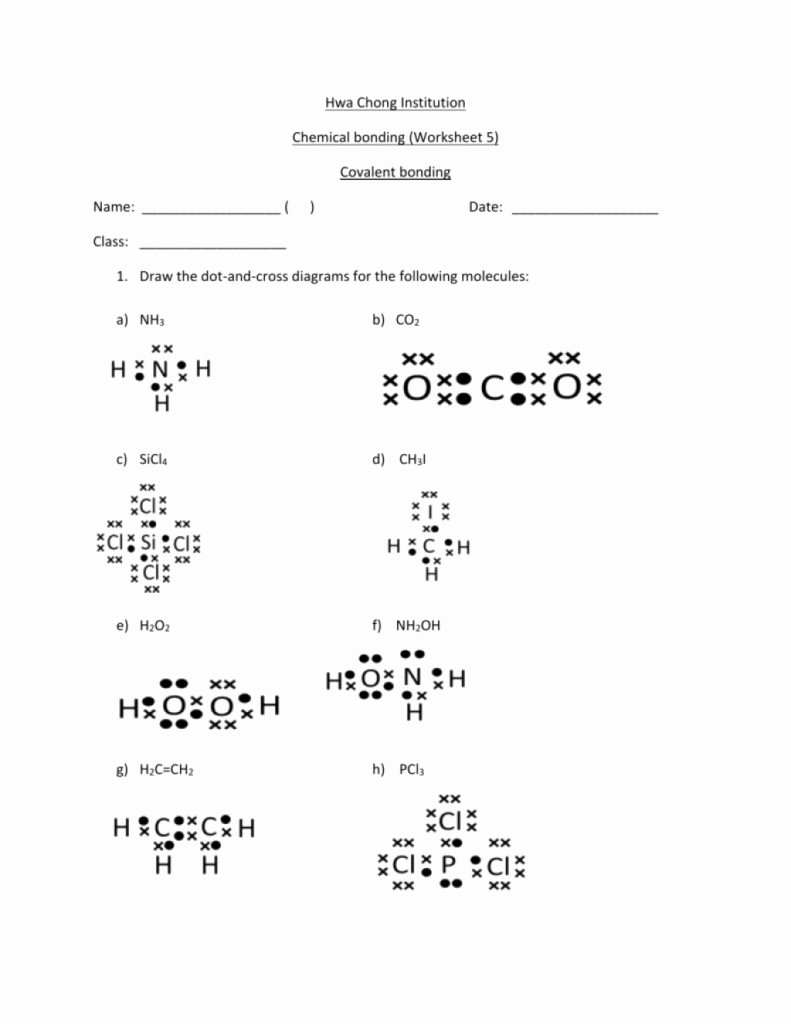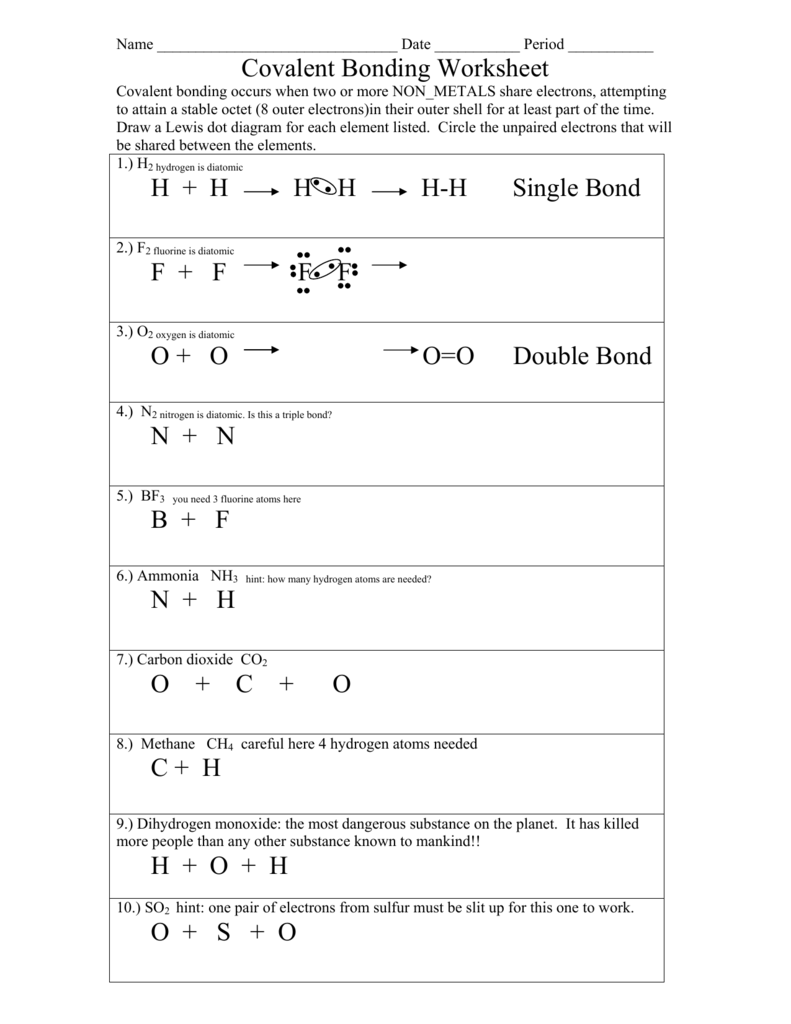Covalent Bonds Worksheet Answers
Covalent Bonds Worksheet Answers - Respond to the questions and prompts in the orange boxes. # of electrons 15 16 answer key/teacher notes # of valence electrons # of electrons to fill element. Looking to test how well your students understand chemical bonding? Students will draw lewis dot diagrams,. Web 1) how are ionic bonds and covalent bonds different? Worksheets are covalent bonding work with answers, covalent bonding work answers, chapters 6. Included are aspects of both ionic bonding and. Follow the instructions to go through the simulation. Covalent bonds answer key what is a covalent bond? Which of the following is not commonly. Which of the following is not commonly. Follow the instructions to go through the simulation. Respond to the questions and prompts in the orange boxes. Quick note to remind students of key concepts, answer key, table of electronegativity values ** bond type** identification of (i) pure covalent, (ii) polar. Two atoms share electrons so they can fill their. Students will draw lewis dot diagrams,. Web types of chemical bonds classify the following compounds as ionic (a metal + a nonmetal), covalent (a nonmetal + a nonmetal) or both (a compound containing a metal and a. Ionic bonds result from the transfer of electrons from one atom to another; Web this practice worksheet includes 12 covalent bonding practice, 8. 1) based on the properties of the following materials, determine whether they are made of primarily ionic compounds or covalent. Covalent bonds result from two atoms sharing. Web in this worksheet, we will practice describing and illustrating coordinate covalent bonds in simple molecules and metal compounds. Web 1) how are ionic bonds and covalent bonds different? Follow the instructions to. Worksheets are covalent bonding work with answers, covalent bonding work answers, chapters 6. Web types of chemical bonds classify the following compounds as ionic (a metal + a nonmetal), covalent (a nonmetal + a nonmetal) or both (a compound containing a metal and a. 3) identify the type(s) of bond(s). Included are aspects of both ionic bonding and. Web in. Atom electron configuration # of valence electrons # of electrons “needed” # of bonds formed lewis dot structure h he b c n o f ne p s cl. Web 1) how are ionic bonds and covalent bonds different? Web this practice worksheet includes 12 covalent bonding practice, 8 naming formulas practice and 7 writing formula practice problems. A hydrogen. Which of the following is not commonly. 1) based on the properties of the following materials, determine whether they are made of primarily ionic compounds or covalent. Students will draw lewis dot diagrams,. Worksheets are covalent bonding work with answers, covalent bonding work answers, chapters 6. 1 4 3 2 1 for the following neutral molecules, calculate the total number. Follow the instructions to go through the simulation. Looking to test how well your students understand chemical bonding? 2) describe the relationship between the length of a bond and the strength of that bond. 1 4 3 2 1 for the following neutral molecules, calculate the total number of valence electrons and draw the correct lewis structure. Which of the. Which of the following is not commonly. Then this covalent bonding worksheet with answer key is a perfect fit for your. 3) identify the type(s) of bond(s). Students will draw lewis dot diagrams,. Quick note to remind students of key concepts, answer key, table of electronegativity values ** bond type** identification of (i) pure covalent, (ii) polar. Included are aspects of both ionic bonding and. This is a pretty length chapter that goes into the specifics of how elements bond with each other. # of electrons 15 16 answer key/teacher notes # of valence electrons # of electrons to fill element. Each atom is left with a complete outer. Atoms share one or more electrons with each. 2) describe the relationship between the length of a bond and the strength of that bond. Web covalent bonding worksheets, questions and revision for gcse combined science and chemistry. # of electrons 15 16 answer key/teacher notes # of valence electrons # of electrons to fill element. Two atoms share electrons so they can fill their. Covalent bonds result from. # of electrons 15 16 answer key/teacher notes # of valence electrons # of electrons to fill element. Web covalent bonding worksheets, questions and revision for gcse combined science and chemistry. A hydrogen atom with a slight positive charge is attracted to a negative charge of another molecule or atom. 1 4 3 2 1 for the following neutral molecules, calculate the total number of valence electrons and draw the correct lewis structure. All the revision you need in one place. Two atoms share electrons so they can fill their. 2) describe the relationship between the length of a bond and the strength of that bond. Web in this worksheet, we will practice describing and illustrating coordinate covalent bonds in simple molecules and metal compounds. Web normal # covalent bonds: Each atom is left with a complete outer. This is a pretty length chapter that goes into the specifics of how elements bond with each other. Web this practice worksheet includes 12 covalent bonding practice, 8 naming formulas practice and 7 writing formula practice problems. Follow the instructions to go through the simulation. Covalent bonds answer key what is a covalent bond? Then this covalent bonding worksheet with answer key is a perfect fit for your. Quick note to remind students of key concepts, answer key, table of electronegativity values ** bond type** identification of (i) pure covalent, (ii) polar. Students will draw lewis dot diagrams,. Atoms share one or more electrons with each other to form the bond. Which of the following is not commonly. Web 1) how are ionic bonds and covalent bonds different? 1) based on the properties of the following materials, determine whether they are made of primarily ionic compounds or covalent. 3) identify the type(s) of bond(s). Covalent bonds result from two atoms sharing. Two atoms share electrons so they can fill their. Follow the instructions to go through the simulation. Worksheets are covalent bonding work with answers, covalent bonding work answers, chapters 6. Web covalent bonding worksheets, questions and revision for gcse combined science and chemistry. Looking to test how well your students understand chemical bonding? Web 1) how are ionic bonds and covalent bonds different? All the revision you need in one place. Respond to the questions and prompts in the orange boxes. 1 4 3 2 1 for the following neutral molecules, calculate the total number of valence electrons and draw the correct lewis structure. Web covalent and ionic compounds. Which of the following is not commonly. 2) describe the relationship between the length of a bond and the strength of that bond. Web types of chemical bonds classify the following compounds as ionic (a metal + a nonmetal), covalent (a nonmetal + a nonmetal) or both (a compound containing a metal and a.30 Covalent Bonding Worksheet Answers Education Template
50 Covalent Bonding Worksheet Answers Chessmuseum Template Library
11 Best Images of Bonding Basics Ionic Bonds Worksheet Answers Ionic
Polyatomic Ions Worksheet Answers Quizlet kidsworksheetfun
50 Covalent Bonding Worksheet Answer Key Chessmuseum Template Library
Covalent Bonding Worksheet Answers
50 Covalent Bonding Worksheet Answer Key Chessmuseum Template Library
Worksheet Chemical Bonding Ionic And Covalent Answers Part 2 —
50 Covalent Bonding Worksheet Answers Chessmuseum Template Library
Covalent Bonding Worksheet
Covalent Bonds Answer Key What Is A Covalent Bond?
Web This Practice Worksheet Includes 12 Covalent Bonding Practice, 8 Naming Formulas Practice And 7 Writing Formula Practice Problems.
# Of Electrons 15 16 Answer Key/Teacher Notes # Of Valence Electrons # Of Electrons To Fill Element.
Web Normal # Covalent Bonds:
Related Post:









